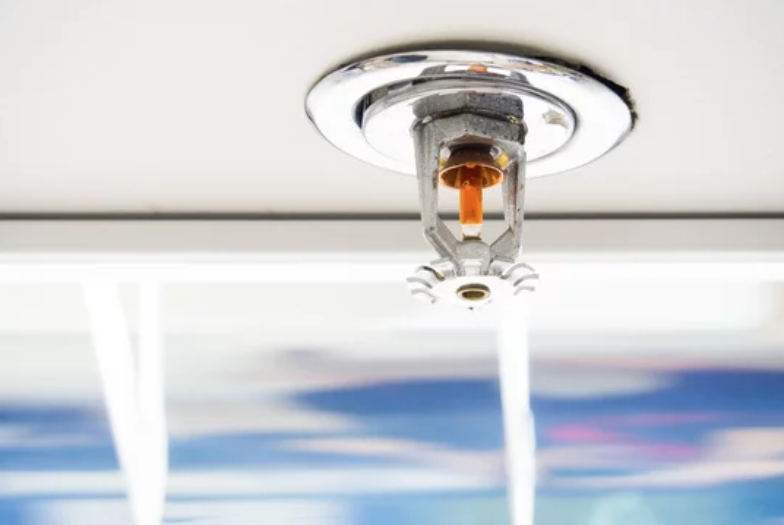If someone asked you to name the elements of a sprinkler system, could you do it? You’ve most likely seen certain elements before; on a basic level, there are sprinkler heads, piping, and valves – but there is so much more! A sprinkler system is designed to control or extinguish fires in the early stages, making it easier and safer for building occupants to exit the building, and for firefighters to extinguish any fire that remains.
Beyond the importance of having a fire sprinkler system, an efficient layout/design is required to allow for cost control and high performance. The variations in building design, and the coordination needed based on components within the building, make fire sprinklers complicated in design. However, understanding the fundamentals of sprinkler design will provide good insight into the specific needs of the project and the detail required for specifications.
Determining the Water Supply
A fire sprinkler system begins with water and having enough of it to control a fire. Most sprinkler systems are automatic, meaning human intervention isn’t necessary. Because of this, a source is required, which can include city water, ponds, rivers, reservoirs, water tanks, and more. No matter the source, it must have a sufficient capacity.
Factors that determine the capacity include:
- Flow Rate (Gallons per minute/GPM)
- Pressure (Pounds per square inch/PSI)
- Duration (How long it can maintain the required pressure & flow)
- Flow Test (provided by nearby fire hydrants)

Water supply is fundamental in the development of a sprinkler system, no matter the building layout.
Understanding the Building

As simple as it sounds, to determine the sprinkler system required, you need to understand the building. Typically, once a contractor has been selected, the contractor then engages their engineer during construction. Unfortunately, this approach can hamper coordination between the sprinkler system and other building elements. Common questions to ask are: Is this a commercial project? Industrial? Or are there specifics required for the building?
For projects where a performance specification is not appropriate, however, our team can provide full sprinkler design services including:
- Sprinkler head layout
- Pipe layouts
- Pipe sizing
Wet, Dry, or Preaction System?
Beyond the capacity and building demands, it’s necessary to determine if a wet, dry, or preaction system is required. Fire sprinkler engineering services offered by Falcon include wet and dry systems, pre-action systems, and specialty gaseous systems for mission-critical infrastructure.
Wet systems, which have pipes filled with water at all times, are the most commonly used system for buildings. Water flows when each sprinkler head reaches its design temperature and the glass element bursts, allowing a plug to drop out.
Dry systems, as the name suggests, don’t contain any water, and are pressurized with air. When a sprinkler head activates, the air is discharged, causing an automatic valve to open and allow water into the piping system. Dry systems are generally reserved for areas with freezing concerns. Lastly, there are preaction systems, where the cost of an accidental discharge would be severe, in places such as data rooms. In this system, water is held back by a preactivation valve and activation relies on a separate trigger, providing another layer of protection or control when activating water.

Conclusion
If there is one point we hope you take away from this, it is that fire sprinkler systems are complicated yet essential. While there are many factors to consider with these systems, evaluation, assessment, and specifications are instrumental to the performance of the system.
At Falcon Engineering, we can offer performance specifications or full design and engineering services, depending on the specific needs of the project. We are committed to providing effective system designs for mechanical projects.
Should you have any questions about how our team can help you with your mechanical projects, including Fire sprinkler engineering, get in contact by using our contact page.
Check out our service offerings here.
Want to learn more about mechanical engineering? Check out some of our other blogs!